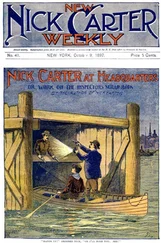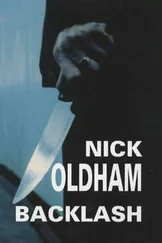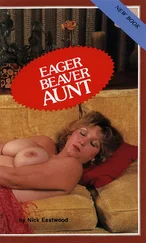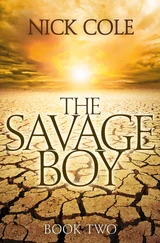The upshot of the exercise was essentially that Clay, unanesthetized by booze, was freer to hear the disparate rhythms of his life’s burdens, and that this clarity was helping him to minister to his needs. Clay was finding out who he was. As a side benefit, he was turning into one hell of a musician; he’d stopped standing onstage in his own selfish, alcohol-fumed cloud and had started to learn how to be a part of something bigger than himself.
“I’ve been reduced to a precognitive state now that my booze-hole no longer needs constant filling,” Clay said. “I’m learning all over how to communicate. This Whorfian shit really works, okay?”
As Clay and I sat there talking in the barn, I was reminded of something that had happened almost exactly a year before, when Nathan had seen Jenny for the last time. It, too, was a moment of clarity—a clear line between the beginning of one thing and the end of another. Nathan and I had gone to Waterloo to see the exhumation of a murder victim. Afterward, Nathan had gone briefly to Jenny’s place in a three-story apartment complex next to a park on the East Side. The murder involved two identical twin brothers in their late twenties named Tonie and Zonie Barrett, from Waterloo. Zonie had just gotten out of jail for attempted murder; according to the confession that Tonie had given the Oelwein police the previous evening, Zonie had instructed Tonie on how to kill his girlfriend, Marie Ferrell. Marie was a recent arrival in Oelwein and had lived downtown on the second floor of an old building just across the street from the movie house, kitty-corner from Leo’s Italian Restaurant. Nathan said that Marie had been encouraged by a DHS caseworker in Waterloo to move to Oelwein, for the reason that so many people—Nathan and Jamie and Murphy among them—resent: lower taxes and a lower cost of living. Apparently, Marie had been cheating on Tonie.
Tonie had let himself into Marie’s small apartment on Main Street in Oelwein and bludgeoned her to death. Then, as his twin Zonie had instructed, Tonie rolled Marie’s body in a blanket and drove her to Waterloo. There he stashed her beneath one of a long line of disassembled tractor trailers that had been sitting in disuse for a decade or more outside the abandoned Rath meatpacking plant. He’d dug a shallow grave, put the blanket-wrapped body in it, and covered the whole thing with an old wooden shipping pallet. That was four days before the rains started.
By the time Nathan and I got to Waterloo to see Marie’s body exhumed, it had been lying there in the 105-degree heat for the better part of a week. It had also rained five inches the night before. According to Tonie’s videotaped confession, he’d “missed” his girlfriend, as he put it, and wanted to “check on her,” which he did twice, apparently just crawling beneath the eighteen-wheeler and squatting there for an hour or two at a time. On one of those visits, he took advantage of the privacy offered by the line of flatbeds in the dead of a sultry June night and moved his bowels next to the grave. The smell of human feces—compounded by the rain and the heat and the raw, visceral stench of the woman’s decomposing corpse—was indeed remarkable. So much so that nine vultures had gathered on the ledge of the packing plant’s roof as Buchanan County detectives readied themselves to remove the body by rubbing Vicks vapor rub beneath their noses.
Maybe being that close to a body had solidified something for Nathan. After all, it was only a week since he’d buried his brother and unburdened his heart to Jamie Porter. It’s hard to say exactly why Nathan got in his white Diesel Jetta and drove from the disinterring of Marie Ferrell—whose case he would eventually try and win—straight to Jenny’s apartment. But that’s what he did, and when we arrived, Nathan walked familiarly through the glass security door at the side of the building and up the stuffy back stairs to the second floor. Jenny’s door at the end of the hall was open. As it happened, she was moving to another apartment in town now that her roommate had decided to move in with her boyfriend.
Jenny’s place smelled like fabric softener, for she’d been washing her clothes. Jenny sat on the floor with her legs tucked under her and her back against the foot of the couch, surrounded by boxes of varying sizes. When Nathan walked in, she rose and they stood a moment, facing each other. The pause was awkward. Then Jenny, who is five three, hugged Nathan—or, rather, disappeared against his nearly seven-foot frame. Neither of them said anything for a while. Then Jenny said, “I’m almost done.”
Nathan looked around and nodded. There were small nails in the walls at even intervals where Jenny had hung her photographs; next to them were the roommate’s pictures, which had yet to be removed. In the little eat-in kitchen, an open cabinet revealed four shelves, two of them cleared of plates and glasses, and two of them still fully stocked. It was as though the whole place had been cleaved in two, and the half emptiness filled the place with a heavy sadness.
Then Jenny looked high on the wall adjacent to the kitchen entryway, where a series of three plates had been hung decoratively down the middle of the wall. Two of them were packed; but the third, the highest, was still hanging. Jenny would have needed a stepladder to get it off the wall, though even then she might not have reached it. In a flash, Nathan had noticed her gaze resting there, and without a word, he had unfurled his full height, stretching out his hand and gently lifting the plate from the two small wall-hooks.
Nathan handed the plate to her. He said, “Well then, I guess I’ll just get out of your hair while you get the rest of this done.” He bent down and kissed her on the cheek. Then he ducked as he went back out the door. Without saying much, he’d said all there was to say. Then he headed home to Oelwein.
CHAPTER 9
THE INLAND EMPIRE, PART TWO
While Lori Arnold was in prison in Alderson, West Virginia, from 1991 to 1999, Cargill consolidated more and more of the meatpacking industry—and the food industry in general, along with Tyson, Archer Daniels Midland (ADM), Swift, and ConAgra. Like the big pharmaceutical companies, the food industry grew both its lobbying power and its political leverage alongside its profits. Meatpacking companies began openly courting immigrant workers from Mexico—many of whom were illegal, had no identification, and whose movements were nearly impossible to monitor. (According to a New York Times article from 2001, a government study found that 40 percent of agricultural workers in the United States are here illegally, while Immigration and Naturalization Services estimated that one in four meatpacking workers in the Midwest is illegal.) As meatpacking plants employed illegals at abysmally low wages, the economies of places like Ottumwa suffered still more. Meantime, DEA had a continued lack of success fighting the meth industry, thanks to the powerful pharmaceutical lobby.
With each Mexican drug-trafficking organization controlling one segment of the U.S. and Mexico border, essentially splitting the 2,500 miles into 500-mile increments, these organizations could tap into the expanding immigration routes throughout the United States—routes blazed by the very illegals who were coming to work in the packing plants. In those illegals, the five major DTOs had a built-in retail and distribution system that, because it is so hard to track, is all but impenetrable by law enforcement. In 2001 a CBS news report on 60 Minutes Wednesday made the point clear when it found that 80 percent of the workers at a Cargill plant in Schuyler, Nebraska, were Hispanic and 40 percent were there illegally. For thirteen hundred dollars, two CBS correspondents were able to purchase stolen social security cards and birth certificates.
Читать дальше












